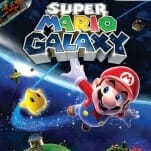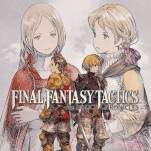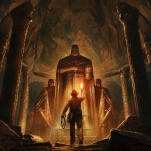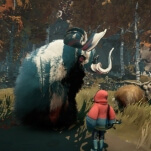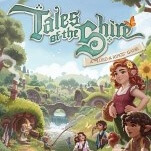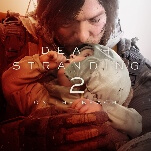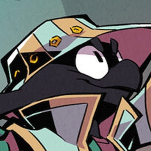The 10 Best Games at GDC 2013
The Game Developers Conference in San Francisco isn’t just about sitting in sessions during the day and partying at night. Developers are anxious to show the press what their games are all about, even if they’re early in development. That results in a whole list of games (often concretized by a pocket full of business cards and USB drives) to look forward to. We collected our favorite and ranked them for your convenience. We realize you don’t have a bunch of business cards, but do your best to remember the names of these games anyway.

10. Fist Puncher
As the title implies, Fist Puncher is a side-scrolling brawler that pushes the absurdity of its genre to the edge, providing the player opportunities to battle nudists, KKK members, Nazis and generic street thugs through an epic game spanning 50 levels. With retro-pixel graphics and basic gameplay, Fist Puncher manages to stand apart only because of its uncomfortable ties to the real world.
Developed by two brothers who grew angry and frustrated living amongst rampant violence and crime in Santa Cruz, California, the game is promoted as “based on true events,” a statement that may surprise those familiar with the look and feel of the game. The player controls absurd characters that fight absurd enemies in absurd locales, and reality seems deliberately disconnected from the game itself. Still, the game laughs in the face of real evils by depicting them as inept pixel-people walking head-first into destruction masquerading as the fists of the protagonist. It’s doubtful that the game will add anything to the conversation about real urban crime, but it could provide a very real opportunity for catharsis for those who live in its midst.—Richard Clark

9. Blackwell Asylum
In the late 1800s it was not uncommon for women to be unjustly committed to insane asylums. Nellie Bly wanted to expose the many injustices that were being committed against women during this time, so she willingly committed herself to an asylum in order to write about her experience. Upon chatting with Claudia Straede, the game’s creative director, I learned that Blackwell Asylum is loosely based on Bly’s book Ten Days in a Mad-House. This free-to-play student project was made over the course of 6 weeks by the Danish Academy of Digital Interactive Entertainment.
The player starts the game as a woman committed to an asylum against her will. Your goal is to escape the asylum. While I would have liked for the game to expose more of the practices of asylums in the late 1800s, Blackwell does something that few games do—it starts you out weak and then makes you weaker. Each time you are caught by one of the asylum’s wardens you are drugged and your movement becomes more labored. You cannot fight the wardens—you can only hide or run from them and can only be caught three times before the game ends. The result is a game that illustrates human weakness through movement. When hiding from wardens in closets you have to tap the space bar to steady your breathing so as to avoid detection. The result is a game that effectively illustrates the dehumanizing influence of a cultural institution of our recent history.—Drew Dixon

8. Tengami
Immediately after finishing the first chapter of Tengami, two thoughts came to mind. First, I wanted to play more. Second, I wanted to share it with my wife and daughter. At its heart, Tengami is a beautifully rendered meditative point-and-click adventure game. Players tap their way through the environments attempting to lead a young avatar to the exit. Players can flip or fold portions of the environment much like opening the pages of a children’s pop-up book ordering the environment such that your avatar can continue. There is very little barrier to entry to these puzzles. After playing the game, I shared my desire to show the game to my family with Jennifer Schneidereit, the game’s creator, and she said that a lot of the people who played the game said that they felt compelled to share it with their partner. This speaks to the creativity, simplicity, and beauty of Tengami.—Drew Dixon

7. Monochroma
Somewhat of a cross between Limbo and Ico, Monochroma is far from a cynical clone. Created by a small development team based in Istanbul, Turkey, Monochroma stands out because of its empathic conceit: The protagonist carries his sibling (whether it’s a brother or sister is unclear) on his shoulders throughout the game, but must put them down at key moments to solve puzzles. But the little one is frightened of the dark, and must only be set down in light areas, easier said than done in the shadows and gloomy environment through which the player must navigate.
The puzzles feel less arbitrary than Limbo’s and more like realistic obstacles the characters may face while navigating the dreary world. Movement is slow-paced and deliberate, causing the player to take his time in the world to explore and admire the beautiful and practical scenery that surrounds them. For a puzzle-platformer, its conceit feels heartening and fresh.—Richard Clark

6. Cannon Brawl
Real-time strategy games are often overwhelming and hard to grasp, a problem that Cannon Brawl solves with elegant simplicity and an approachable art style. Focusing on a single-screen of terrain, players go to work building towers that help them destroy their enemy’s base and protect their own. There’s a choice of just a few towers that can be built, each with their own function, from making money (which enables you to build more towers), to shooting missiles, to setting up shields.
-

-

-

-

-

-

-

-

-

-

-

-

-

-

-

-

-

-

-

-

-

-

-

-

-

-

-

-

-

-

-

-

-

-

-

-

-

-

-

-







